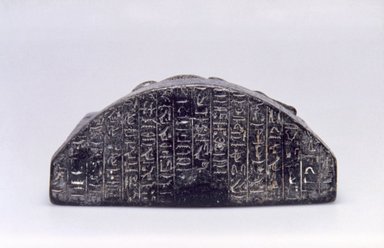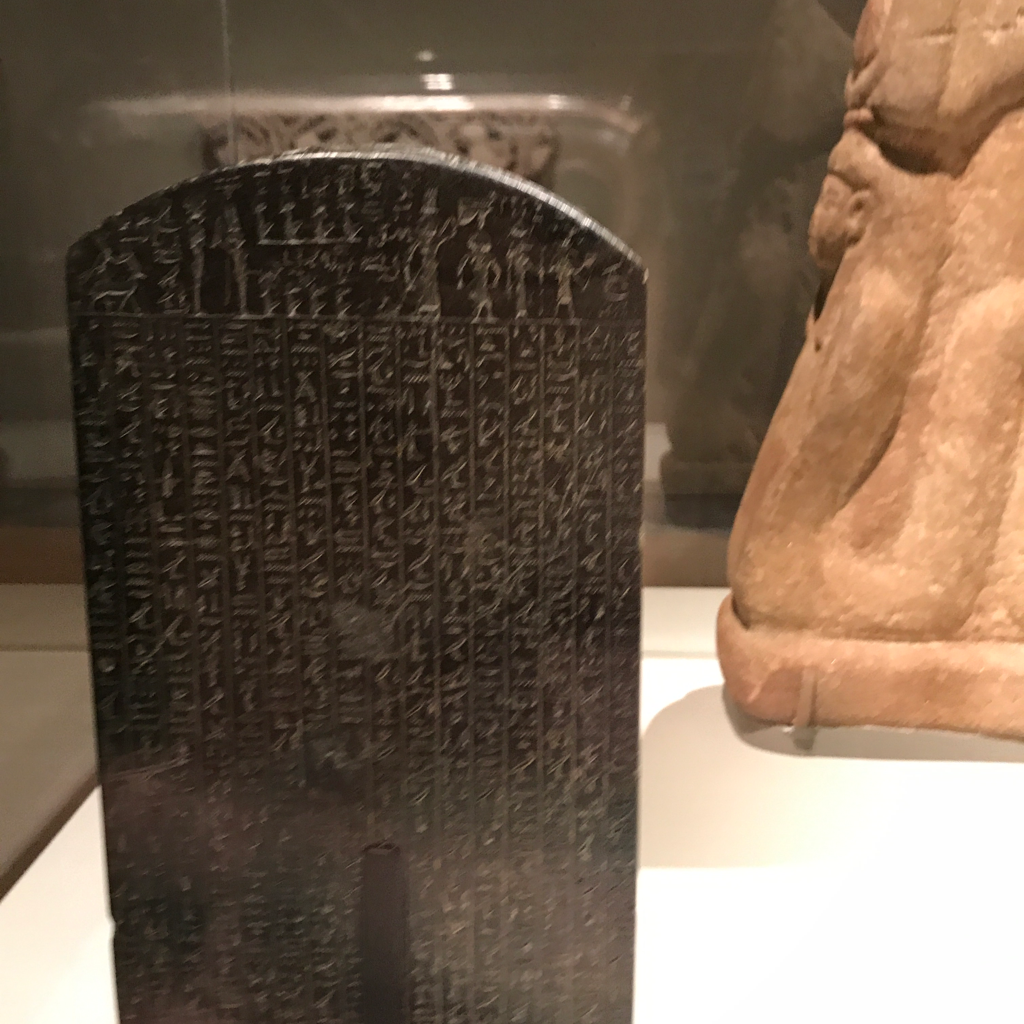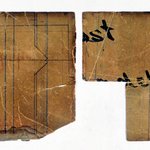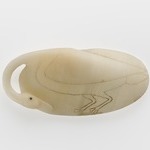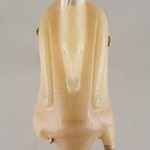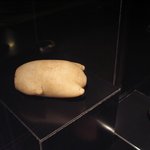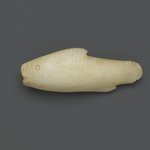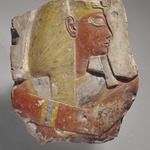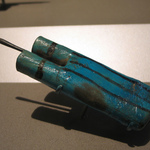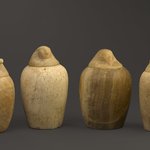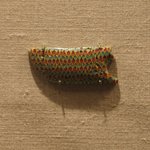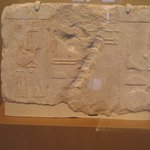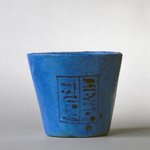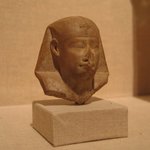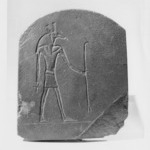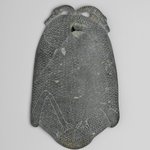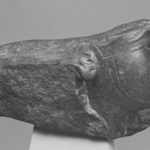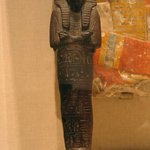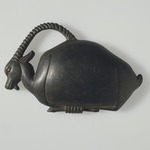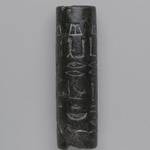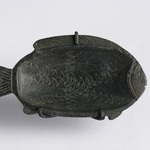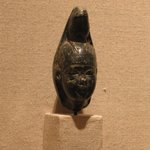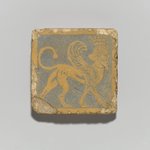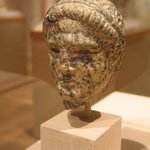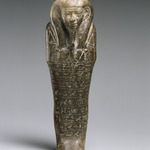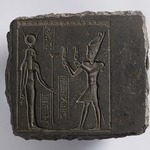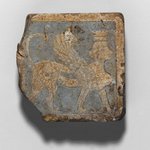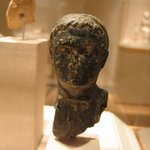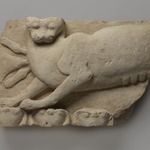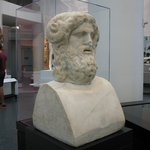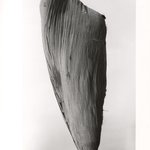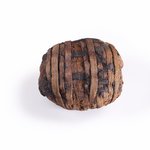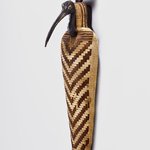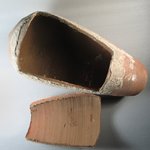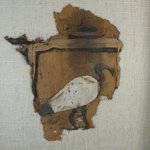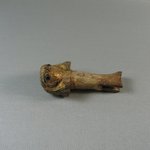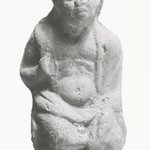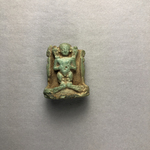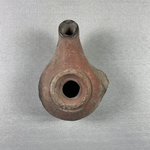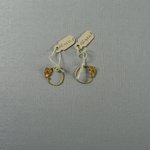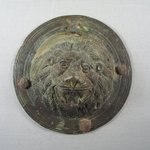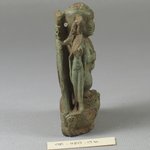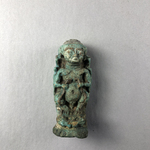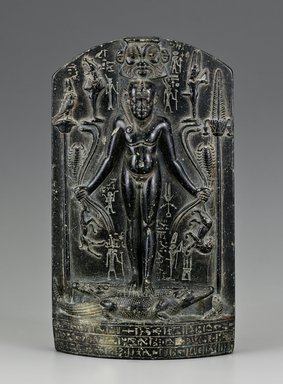

Cippus of Horus on the Crocodiles, 3rd century B.C.E. Steatite, 9 1/8 x 5 5/16 x 2 3/16 in. (23.2 x 13.5 x 5.6 cm). Brooklyn Museum, Charles Edwin Wilbour Fund, 60.73. Creative Commons-BY (Photo: Brooklyn Museum (Gavin Ashworth,er), 60.73_Gavin_Ashworth_photograph.jpg)
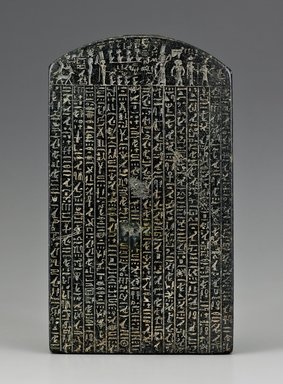
Cippus of Horus on the Crocodiles, 3rd century B.C.E. Steatite, 9 1/8 x 5 5/16 x 2 3/16 in. (23.2 x 13.5 x 5.6 cm). Brooklyn Museum, Charles Edwin Wilbour Fund, 60.73. Creative Commons-BY (Photo: Brooklyn Museum (Gavin Ashworth,er), 60.73_back_Gavin_Ashworth_photograph.jpg)
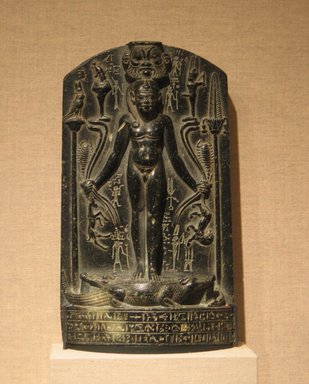
Cippus of Horus on the Crocodiles, 3rd century B.C.E. Steatite, 9 1/8 x 5 5/16 x 2 3/16 in. (23.2 x 13.5 x 5.6 cm). Brooklyn Museum, Charles Edwin Wilbour Fund, 60.73. Creative Commons-BY (Photo: Brooklyn Museum, CUR.60.73_wwgA-2.jpg)

Cippus of Horus on the Crocodiles, 3rd century B.C.E. Steatite, 9 1/8 x 5 5/16 x 2 3/16 in. (23.2 x 13.5 x 5.6 cm). Brooklyn Museum, Charles Edwin Wilbour Fund, 60.73. Creative Commons-BY (Photo: Brooklyn Museum, CUR.60.73.jpg)

Cippus of Horus on the Crocodiles, 3rd century B.C.E. Steatite, 9 1/8 x 5 5/16 x 2 3/16 in. (23.2 x 13.5 x 5.6 cm). Brooklyn Museum, Charles Edwin Wilbour Fund, 60.73. Creative Commons-BY (Photo: Brooklyn Museum, 60.73_SL1.jpg)

Cippus of Horus on the Crocodiles, 3rd century B.C.E. Steatite, 9 1/8 x 5 5/16 x 2 3/16 in. (23.2 x 13.5 x 5.6 cm). Brooklyn Museum, Charles Edwin Wilbour Fund, 60.73. Creative Commons-BY (Photo: Brooklyn Museum, CUR.60.73_NegID_L269_41_print_bw.jpg)
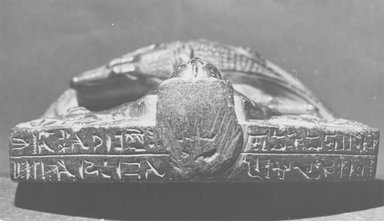
Cippus of Horus on the Crocodiles, 3rd century B.C.E. Steatite, 9 1/8 x 5 5/16 x 2 3/16 in. (23.2 x 13.5 x 5.6 cm). Brooklyn Museum, Charles Edwin Wilbour Fund, 60.73. Creative Commons-BY (Photo: Brooklyn Museum, CUR.60.73_NegID_L269_39_print_bw.jpg)
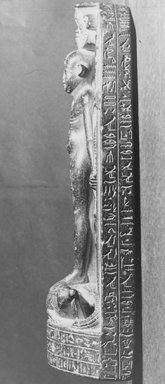
Cippus of Horus on the Crocodiles, 3rd century B.C.E. Steatite, 9 1/8 x 5 5/16 x 2 3/16 in. (23.2 x 13.5 x 5.6 cm). Brooklyn Museum, Charles Edwin Wilbour Fund, 60.73. Creative Commons-BY (Photo: Brooklyn Museum, CUR.60.73_NegID_L269_33_print_bw.jpg)
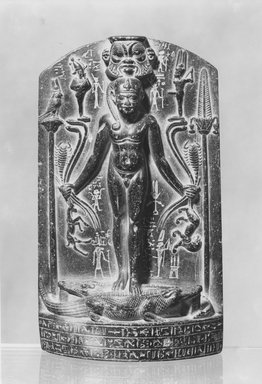
Cippus of Horus on the Crocodiles, 3rd century B.C.E. Steatite, 9 1/8 x 5 5/16 x 2 3/16 in. (23.2 x 13.5 x 5.6 cm). Brooklyn Museum, Charles Edwin Wilbour Fund, 60.73. Creative Commons-BY (Photo: Brooklyn Museum, CUR.60.73_NegB_print_bw.jpg)
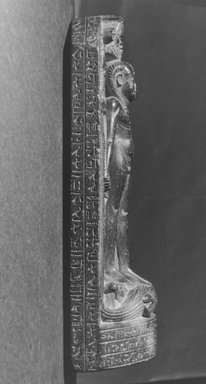
Cippus of Horus on the Crocodiles, 3rd century B.C.E. Steatite, 9 1/8 x 5 5/16 x 2 3/16 in. (23.2 x 13.5 x 5.6 cm). Brooklyn Museum, Charles Edwin Wilbour Fund, 60.73. Creative Commons-BY (Photo: Brooklyn Museum, CUR.60.73_NegID_L269_35_print_bw.jpg)

Cippus of Horus on the Crocodiles, 3rd century B.C.E. Steatite, 9 1/8 x 5 5/16 x 2 3/16 in. (23.2 x 13.5 x 5.6 cm). Brooklyn Museum, Charles Edwin Wilbour Fund, 60.73. Creative Commons-BY (Photo: Brooklyn Museum, 60.73_NegB_bw_SL4.jpg)

Cippus of Horus on the Crocodiles, 3rd century B.C.E. Steatite, 9 1/8 x 5 5/16 x 2 3/16 in. (23.2 x 13.5 x 5.6 cm). Brooklyn Museum, Charles Edwin Wilbour Fund, 60.73. Creative Commons-BY (Photo: Brooklyn Museum, CUR.60.73_emagic.jpg)
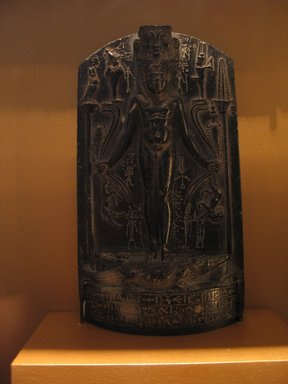
Cippus of Horus on the Crocodiles, 3rd century B.C.E. Steatite, 9 1/8 x 5 5/16 x 2 3/16 in. (23.2 x 13.5 x 5.6 cm). Brooklyn Museum, Charles Edwin Wilbour Fund, 60.73. Creative Commons-BY (Photo: Brooklyn Museum, CUR.60.73_temples.jpg)
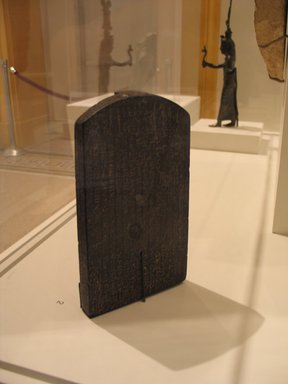
Cippus of Horus on the Crocodiles, 3rd century B.C.E. Steatite, 9 1/8 x 5 5/16 x 2 3/16 in. (23.2 x 13.5 x 5.6 cm). Brooklyn Museum, Charles Edwin Wilbour Fund, 60.73. Creative Commons-BY (Photo: Brooklyn Museum, CUR.60.73_view2_emagic.jpg)
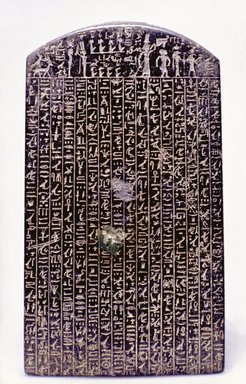
Cippus of Horus on the Crocodiles, 3rd century B.C.E. Steatite, 9 1/8 x 5 5/16 x 2 3/16 in. (23.2 x 13.5 x 5.6 cm). Brooklyn Museum, Charles Edwin Wilbour Fund, 60.73. Creative Commons-BY (Photo: Brooklyn Museum, 60.73_back.jpg)
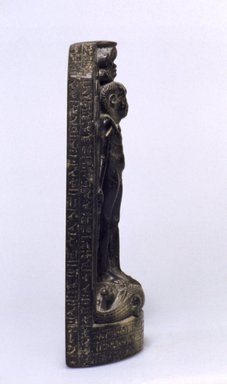
Cippus of Horus on the Crocodiles, 3rd century B.C.E. Steatite, 9 1/8 x 5 5/16 x 2 3/16 in. (23.2 x 13.5 x 5.6 cm). Brooklyn Museum, Charles Edwin Wilbour Fund, 60.73. Creative Commons-BY (Photo: Brooklyn Museum, 60.73_side1.jpg)
Cippus of Horus on the Crocodiles
Egyptian, Classical, Ancient Near Eastern Art
On View: 19th Dynasty to Roman Period, Martha A. and Robert S. Rubin Gallery, 3rd Floor
Traditional Egyptian magic and religion such as this thrived throughout the fourth and third centuries B.C.E. despite the largely non-Egyptian origin of the country’s rulers at that time.


